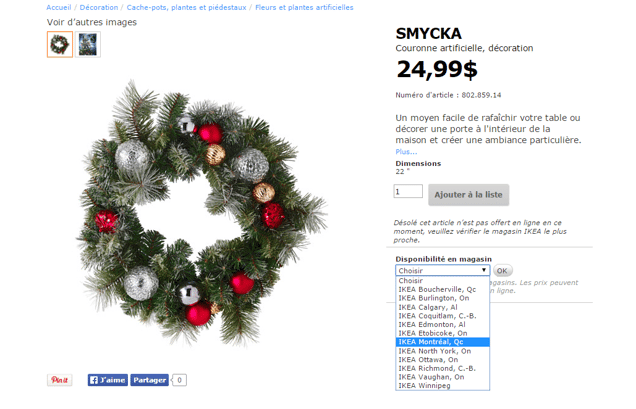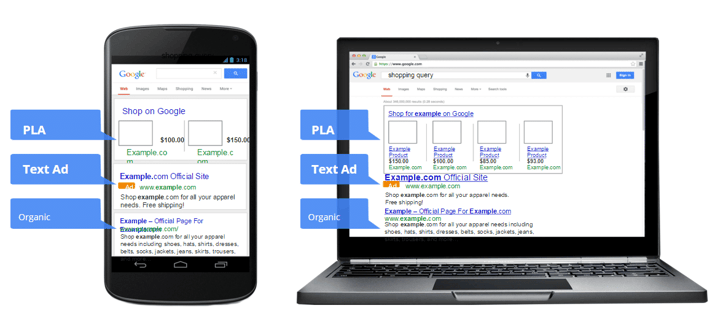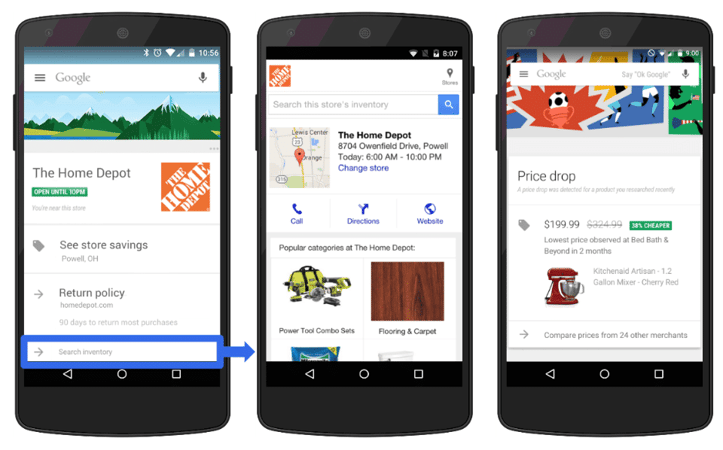The latest Canadian shopping trends, just in time for the holidays
We’re about a week away from the start of the busiest time of the year for retail businesses. To stay up to date on recent changes in the industry, I had the opportunity to attend Shopping Guru Day on October 29, organized by Google Toronto. It was an interactive day that brought together representatives from agencies in Montreal, London (ON), and Toronto, with the objective of discussing the latest shopping trends and developments in Canada.
Shopping trends in Canada
The day started off with a torrent of statistics on consumers’ shopping habits. With Black Friday, Cyber Monday, and the holiday season fast approaching, it’s critical to be aware of any changes in your target market’s shopping habits that might impact this busy period.
Here are a few highlights that struck me:
- In Canada, in 2015, only 5.9% of retail purchases were made online, putting us in 9th place in terms of the extent of our online shopping. According to projections from e-marketer, we should reach 8.2% by 2018. Unsurprisingly, England has the highest rate, with 14.4% of retail purchases made online. That’s why it’s essential to take all channels into account when you measure digital media performance and the performance of your site in general, to understand the role the web plays in your customers’ decision-making process.
- The holiday shopping period is getting longer and longer. In fact, 47% of Internet users will start their holiday shopping before Cyber Monday (November 30) and 44% of users will take advantage of post-holiday sales. If you still haven’t put a strategy in place, now is the time to do it!
- The volume of mobile searches increased by 115% between June 2014 and June 2015. Even though conversion rates are typically lower on mobile, it’s important to be present on this channel, which is often a first touch point for consumers.
- In-store traffic, or “foot traffic” dropped by 55% between 2010 and 2013. However, the value of each store visit doubled! That means that when people visit a store, they are making bigger purchases. In the era of online window shopping, we’ve made the leap from foot traffic to finger traffic.
- In North America, 81% of Internet users will spontaneously use their mobile devices to shop. Users are navigating across diverse platforms (social networks, blogs, etc.). Being present on the web in an accessible way will allow you to have a good first point of contact with users.
Micro-moments and the customer journey
Consumers’ purchasing behaviours have evolved a lot over the past 25 years. Between web and mobile, it’s important to be present for the key moments of the customer journey.
Here are 3 micro-moments where you have the chance to have a positive impact on your potential customers:
- I want to know
- I want to go
- I want to buy
Knowing that 77% of consumers don’t have a particular store in mind when they are looking for a product, being present from the moment the user starts searching for information online and off can have a significant impact on whether your brand ends up in the running. It’s never too late to influence a purchase, especially during the holidays!
I want to know
82% of consumers use their phones to make purchasing decisions while they shop.
With the abundance of information Google provides, users are becoming more informed about products before they buy. The more present your brand is early in the decision-making process, the more likely it is that users will consider you.
If your site isn’t mobile responsive, don’t despair! Tactics like setting up a shopping campaign with your products, using location extensions on Google My Business, and many others can help inform users about your stores and products.
If your site is mobile-friendly, don’t forget about SEM for high funnel search intentions, and in-market targeting to incite users to visit your site!
I want to go
The volume of “near me” search queries has increased 34 times since 2011.
It’s essential that your stores are referenced on Google Maps and other mobile apps. Moreover, when users visit your stores, they don’t want to go for nothing – they want to find the right product right away.
Ikea is an example of an interesting site where users can see the number of products available in each of their locations.

Availability of IKEA products on their website.
One of Google’s new features allows you to go even farther: you can now use a flood of products containing your store inventory. Just like Shopping Campaigns, soon it will be possible to link these to your Merchant Center and use it in your campaigns!
I want to buy
Combining Shopping Campaigns and traditional search ads can allow brands to maximize their visibility in search.
Like at the grocery store, the notion of shelf space exists in search – in other words, it’s important to be high enough on the page to be visible to consumers. Whether we’re talking about mobile or desktop, search ranking is a critical part of maximizing performance. Shelf space is even more important in a competitive environment.

Shelf Space, Google AdWords
New features like price drop cards allow you to present more information on price reductions, and expandable shopping ads offer advertisers the opportunity to capitalize on increased space in search engines, while allowing consumers to “skip” steps in the purchase process. Consumers can also buy a product directly in Google by clicking on an ad.
Price Drop Card, Google AdWords
People are more and more driven by advertisers, even if they aren’t shopping. That’s why it’s essential to be there for every point of the customer journey, from the moment of inspiration, to the time when the user decides to go to the store or make an online purchase.
The paradigm shift from foot traffic to finger traffic is strongly linked to the hold our mobile devices have over us as the primary way we look for information. We won’t stop wanting to try on that little black dress from one day to the next, but that doesn’t mean we won’t be comparing styles and prices before setting foot in the store!


.jpg)





